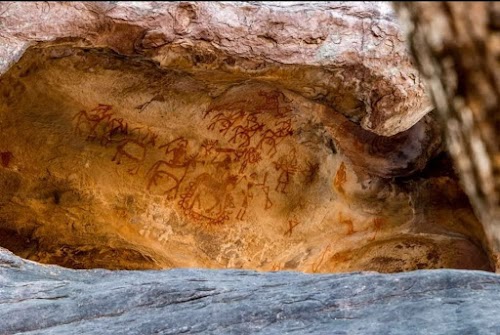
Bhimbetka Caves
Bhopal, India
- Enjoy the natural beauty of the area.
- Explore the ancient rock paintings.
- Hike through the surrounding rock formations.
- Learn about prehistoric human life.
- Photography of the cave art.
Known for:
Description:
The Bhimbetka Caves, a UNESCO World Heritage site, offer a fascinating glimpse into prehistoric human life in India. Located about 45 kilometers south of Bhopal, these caves showcase remarkable rock paintings dating back over 30,000 years. The paintings depict scenes of daily life, hunting, animals, and religious rituals, providing invaluable insights into the evolution of human culture and art. The caves are set amidst stunning natural rock formations and dense forests, creating a serene and awe-inspiring atmosphere. Exploring the Bhimbetka Caves is like stepping back in time, offering a unique opportunity to connect with our ancient ancestors and appreciate their artistic expressions. The site comprises over 700 rock shelters, though only a portion are open to the public, making it a manageable yet enriching experience for visitors of all ages.
History:
The Bhimbetka rock shelters were discovered in 1957 by Dr. V.S. Wakankar, an archaeologist who recognized their historical significance. Subsequent excavations revealed that the caves were inhabited by humans from the Lower Paleolithic period through the Mesolithic, Chalcolithic, and early Historic periods. The rock paintings, created over millennia, provide a continuous record of human activity in the region. The oldest paintings are believed to be from the Upper Paleolithic period (around 30,000 years ago), while the most recent ones date back to the medieval period. The site's strategic location, with its abundance of natural resources and shelter, made it an ideal habitat for early humans. The discovery of Bhimbetka revolutionized our understanding of prehistoric art and human settlement in India, solidifying its place as a crucial archaeological site.